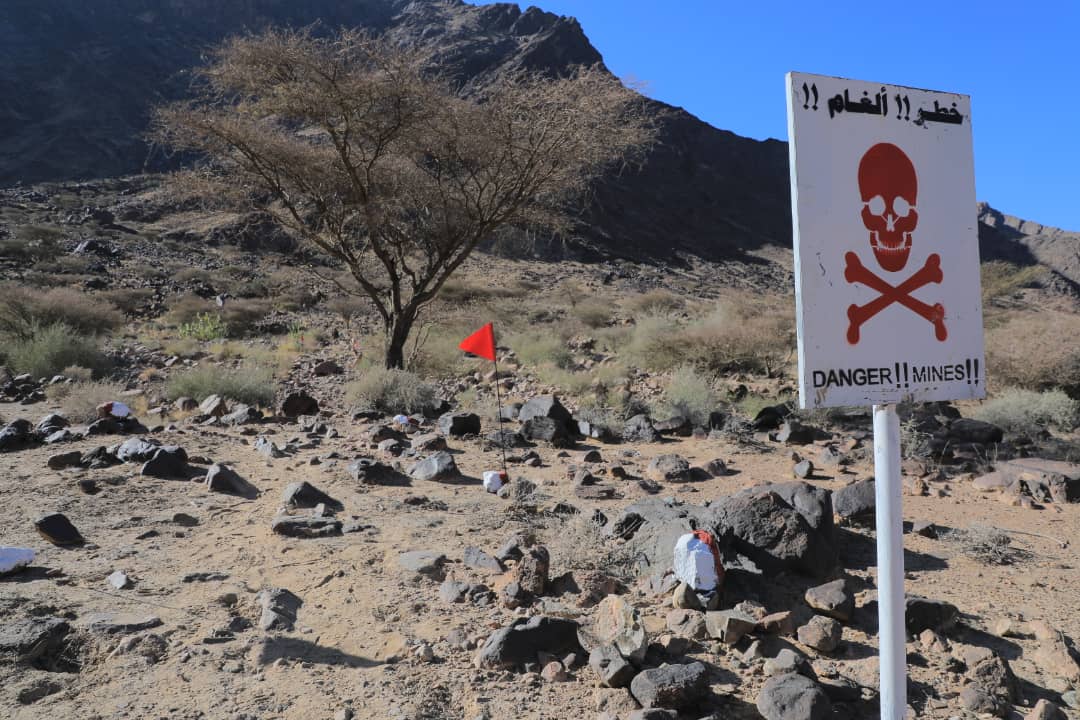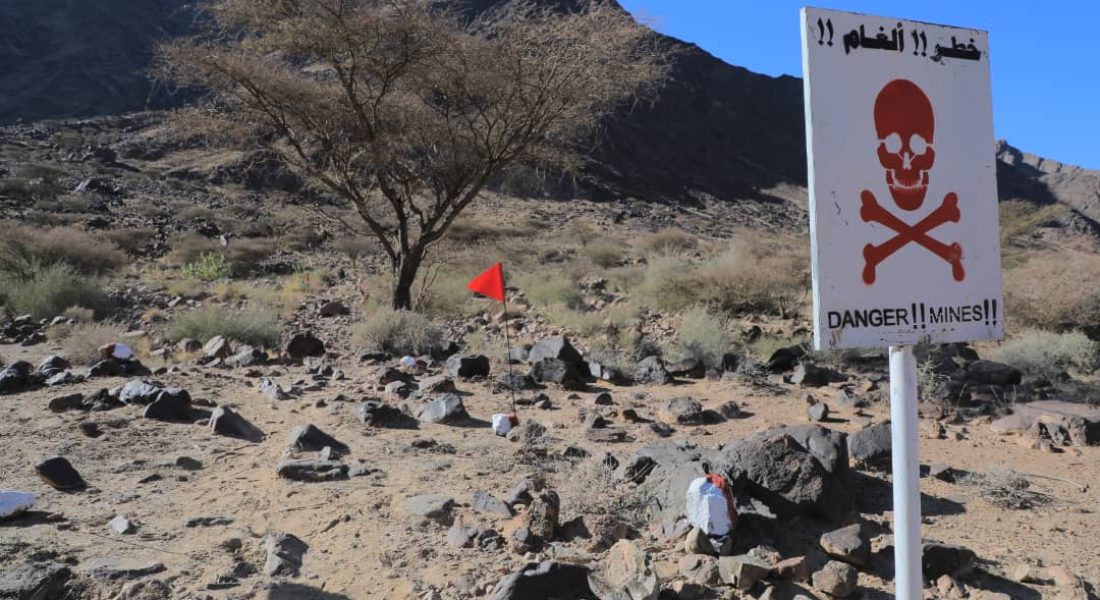
Masam experts have visited Teams 27 and 28 in Al-Alfaqi village in the mountainous Al Bugar area, located in the Karsh district in Yemen’s southern power keg Lahj Province.
Both teams are clearing an anti-personnel minefield, with Team 27, led by Ali Hadi Rashid Hussaen, doing clearance and Leader Fekry Hasan Naji’s Team 28 conducting surveys.
Landmines can be very difficult to detect and clear, especially if they are located in side of mountains or rocky terrain.
“The main reasons for finding mines in these rugged and mountainous areas by the Mine Clearance Teams are due to the fact that the opposing forces [Houthi militias] lay anti-tank and anti-personnel mines on their approach routes to prevent the enemy [Coalition Forces] to reach the high ground,” Masam Aden Operations Officer and Project Manager Gus Maartens, said.
“In war, the rule is “He who dominates the high ground usually wins the Battle”, thus during war it is normally an advantage for whoever holds the high ground, as it serves to protect observation posts, defensive positions as well as sniper positions.
“In Yemen, you find anti-personnel mines in footpaths winding up the mountain, and anti-tanks are found on roads going up the mountain,” Maartens said. “Most of the areas in which Masam operates were previous frontlines, or positions and are also littered with unexploded ordnance (UXO) scrap metal.”
Lurking dangers
Mine clearance in mountainous areas is always dangerous due to the steep angle of clearance operations, loose rocks, and the fact that deminers can easily slip and step out of the cleared areas.
Other real threats include mine migration during the rainy season, and because there is a combination of different anti-personnel mines and improvised explosive devices (IEDs) that are used in Yemen, deminers face blast and directional fragmentation. IED rock mines, for instance, are well concealed and can be triggered by passive infrared (PIR) sensors.
Humanitarian demining is a dangerous occupation. Despite safety policies and international standards applied in all clearance activities, accidents can happen.
“In mountainous areas, casualty evacuation takes longer, because patients need to be taken down the mountain to the ambulance,” Maartens added.
Whilst it is difficult to estimate how much of Masam’s total clearance in Yemen is considered to be in difficult terrain, the Operations Officer said no minefield is an easy task.
“There is always an element of risk involved, whether in a mountainous area or a simple minefield on the beach,” he added.
Since Masam first entered Yemen in mid-2018, Saudi-funded Project Masam has located and destroyed 286,080 explosive devices, effectively clearing 27,655,847sqm of Yemeni liberated land. These include 4,174 anti-personnel mines, 96,046 anti-tank mines, 6,111 EDs and 179,749 UXO (as at 05 November 2021).

